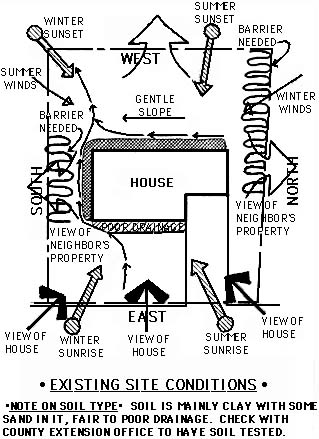Study your site. The piece of land you live on is generally referred to as the site. Ideally the selection of the site, placement and design of the house and the landscape development should all be done at the same time. Selecting a site without having some idea of the type of house and landscape development you want would be difficult.
Often, natural building materials (i.e. stone, rough cedar, etc.) lend themselves to a more sustainable landscape design.
Go back to the base plan you prepared in step one. Look closely at the problems and opportunities of your particular site. Tape a piece of tracing paper over the plot and prepare a rough sketch:
- Indicate major views from the inside looking out as well as the view on the site itself. Determine whether they are good or bad (for example: a direct view of the neighbor’s trash or an open field of wildflowers.
- Show exposure to summer breezes as well as winter winds. Also, indicate where you need shade.
- Indicate drainage patterns and slope of the land. Also, note any problems such as areas where water stands or needs to be redirected.
- Note the soil type and approximate depth, and have your soil tested. (For further information on soil testing procedures, contact your county Extension office.)
Remove your tracing paper rough sketch and record this information as neatly as possible on your base plan.
An inventory of existing vegetation can also be an important site consideration. Also investigate local water quality and determine average temperatures. By thoroughly understanding the various characteristics of the site, you can implement Earth-Kind principles and practices that will contribute to a healthy and sustainable landscape environment.


